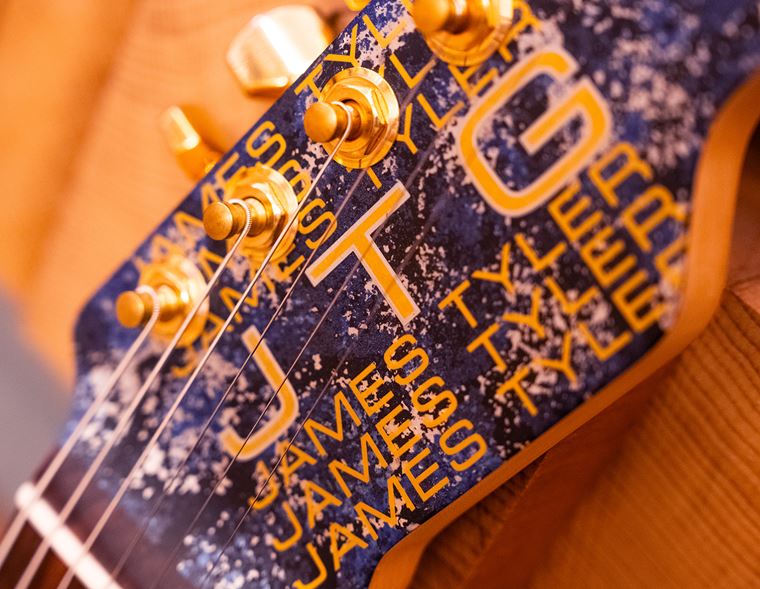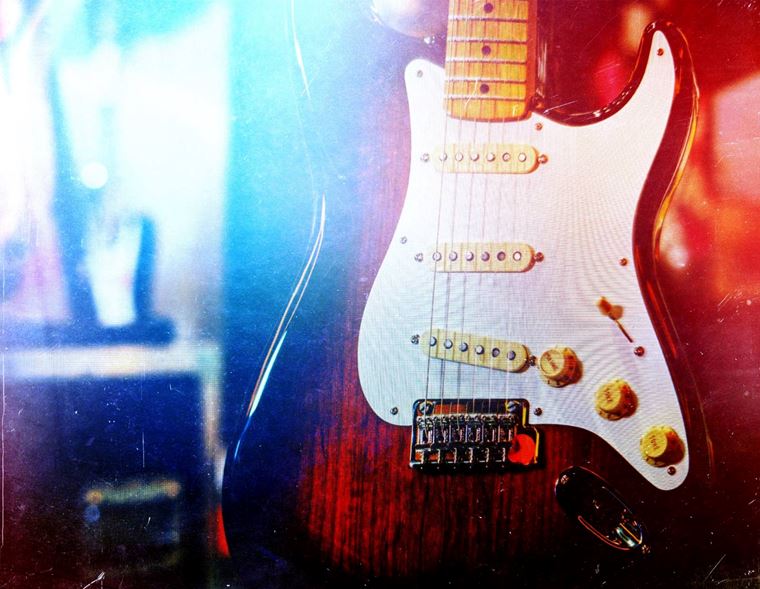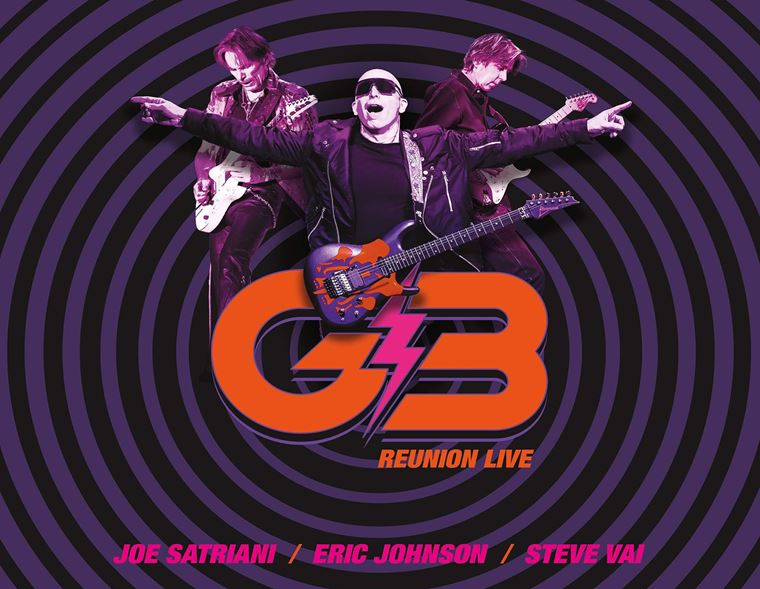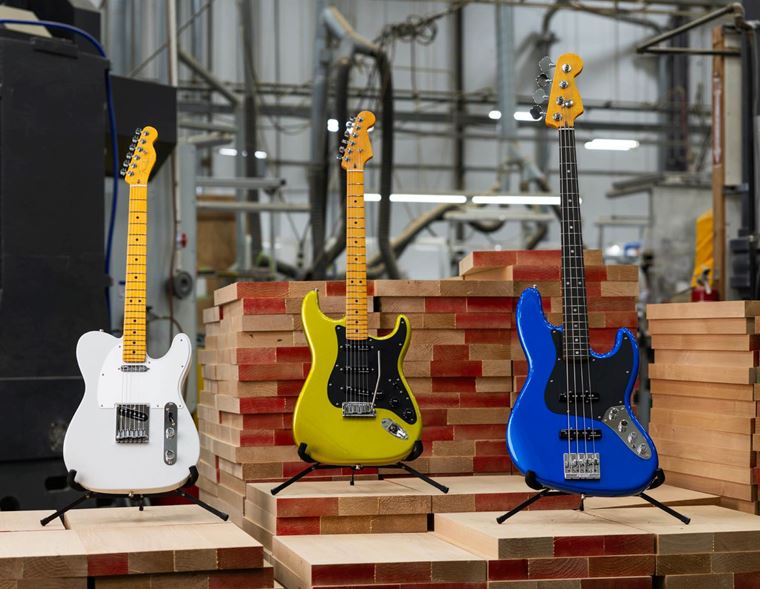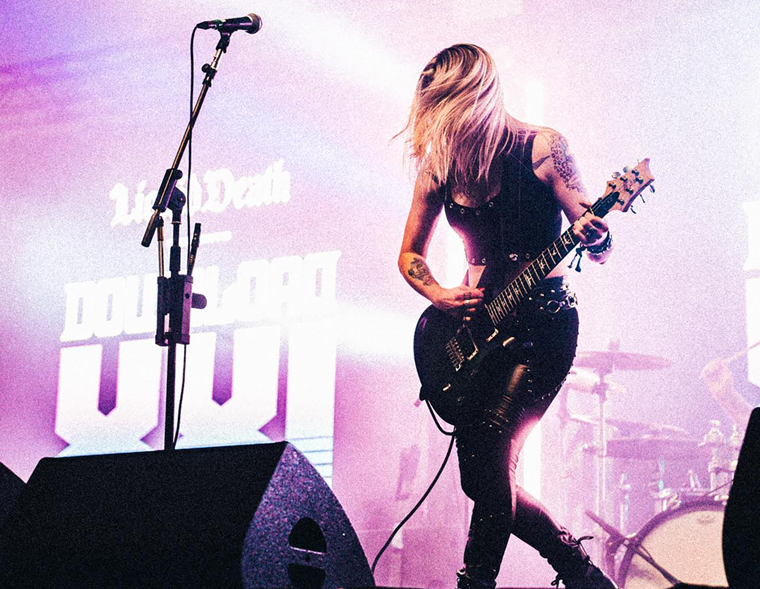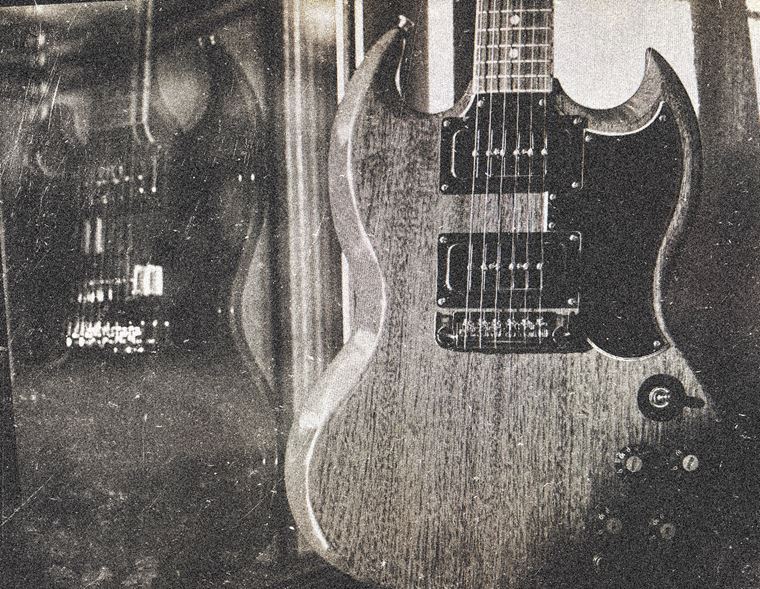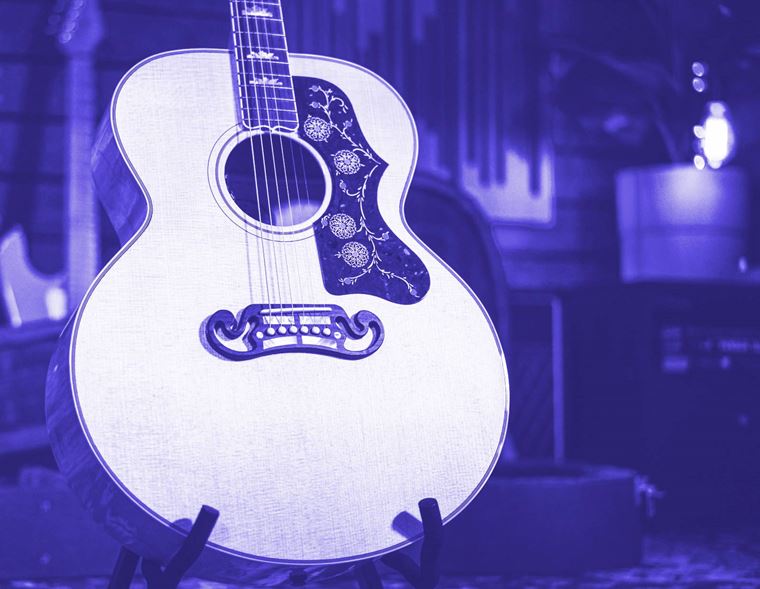10 Most Famous Guitars and Their Rockstar Owners
Published on 09 October 2023
What’s your favourite guitar? Did you see it in the arms of your musical hero? For decades, there has been a special connection between certain guitars and their famous owners. Sometimes, an instrument has even been associated with more than one great artist, such as the Gibson ‘Greeny’ Les Paul, which has had no less than three illustrious ‘parents’.
Today, I’ve rounded up some of the most famous, iconic and influential guitars on the planet, and their equally famous rockstar owners! I’ll talk a little about each, and share a video of them in action, if such a thing exists. Will your favourite be included?

Gibson ‘Greeny’ Les Paul - Peter Green/Gary Moore/Kirk Hammett
One of the three most well known Gibson Les Pauls in existence is the one known as ‘Greeny’. A 1959 Gibson Les Paul Standard with a faded Sunburst top, this wonderful specimen first found fame through Fleetwood Mac’s Peter Green. A massively influential player for his time, Green’s sound was partly achieved through a wiring inconsistency/modification (the debates will never cease) that gave the normally bold Les Paul tone a twangier, more ‘nasal’ sound that is hugely appealing.
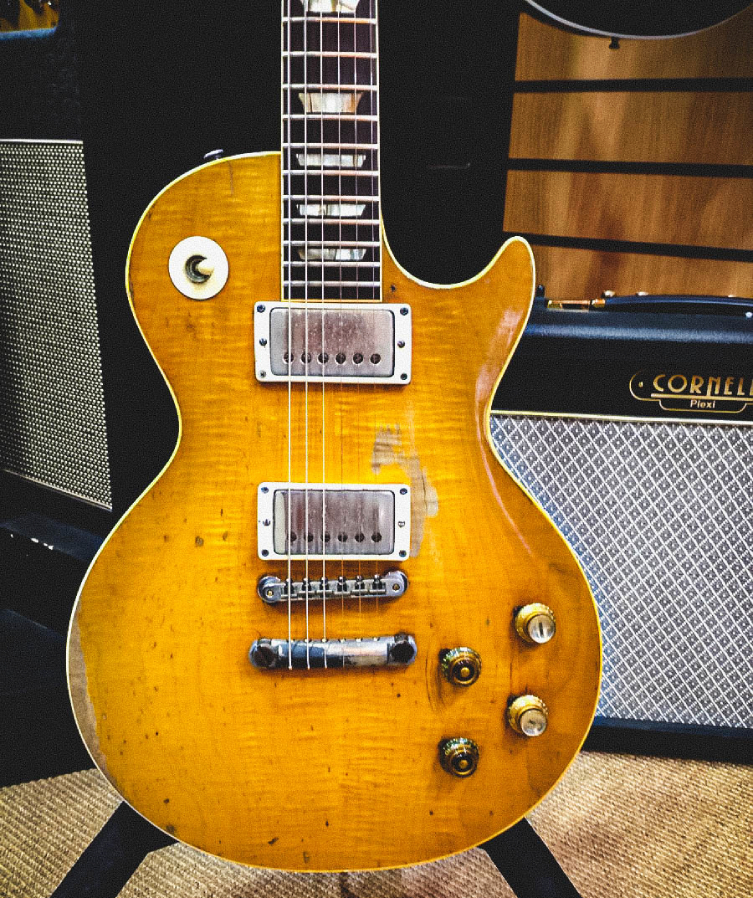
The story doesn’t end there, though. Green was evidently not too attached to his worldly possessions, because he eventually sold it on to ex-Thin Lizzy guitar extraordinaire Gary Moore, reputedly for very little cash. Moore used Greeny for decades on both recordings and tours, before retiring it. Some time later, Metallica’s Kirk Hammett became the owner, and continues to take it around the world with him to this day. The insurance cost must be scandalous!
Red Special - Brian May
Queen’s Brian May has a guitar tone that is as distinctive and unique as his playing style. How did he come up with it? Well, building his own guitar probably had something to do with it!
It’s a legendary tale, but a true one: May and his father ransacked an old fireplace for suitable timber, carefully carved out the pieces, and hand built one of the most famous electric guitars in the world: Red Special. It had a knitting needle for a whammy bar, for goodness sake!
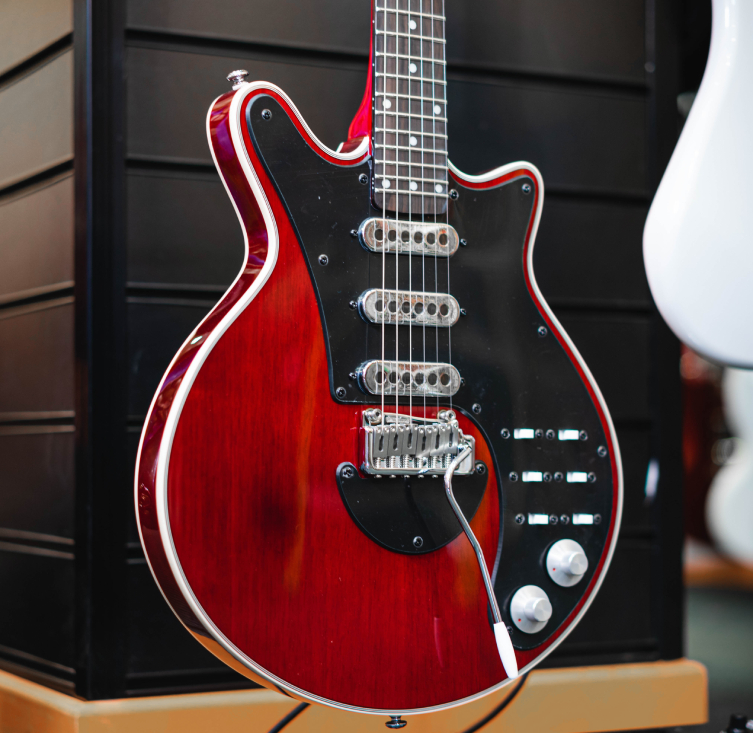
That element may or may not have been upgraded in the 50+ years of the guitar’s active service, but May has stuck by Red Special almost exclusively for his entire career.
Festooned with special switches and a set of Burns Tri-Sonic pickups (the only real cost involved in the build, according to May), Red Special delivers tones that have adorned every Queen album and reverberated throughout every gigantic stadium throughout the world ever since.
Frankenstein - Eddie Van Halen
Talking about home made guitars and unique playing styles, this relatively well known example springs to mind! Perhaps not quite as ‘built from scratch’ as Bri’s, Eddie created his famous striped guitar by bolting together bits of other guitars (a ‘Boogie Bodies’ Strat body designed by Dave Schecter and an old Strat neck which Eddie already had) and in doing so, earned himself one of the most well-known and instantly recognisable guitars in history.

Dutch-Californian virtuoso Eddie Van Halen swiped a old PAF pickup from his Gibson ES335 and, after chiselling that replacement Strat body, fitted the humbucker into the newly-gored hole. At Van Halen singer David Lee Roth’s suggestion, Ed then got out the masking tape and spray cans to create the instrument we all know today as Frankenstein.
This recipe - single humbucker Strat (the neck pickup was a dummy) with a whammy bar - went on to dominate the 80s and create what we know as the ‘Superstrat’, tons of which are still made every year. Good idea!
The Monterey Strat - Jimi Hendrix
Jimi Hendrix was one of those artists who made everything they touched more special by association: a normal white Stratocaster in his hands became ‘the Woodstock Strat’, for example. My choice today is one of his more customised (and much-copied) instruments: the Monterey Strat.
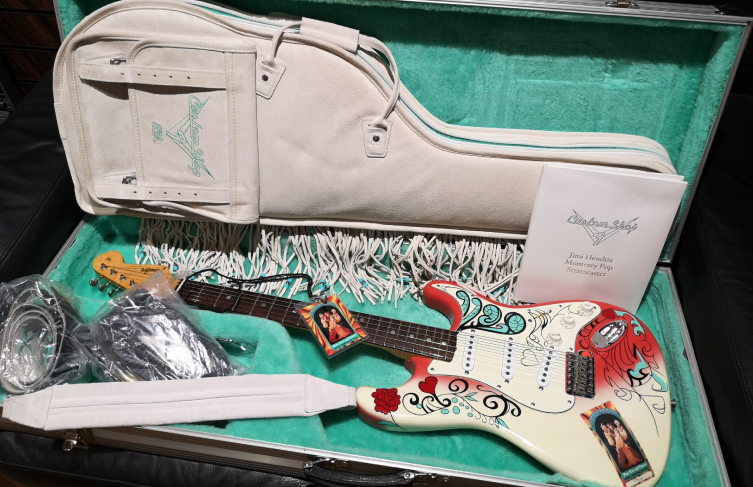
Like the Woodstock Strat, this guitar earned its name from the festival in which it famously appeared, the 1967 Monterey Pop Festival in California. This was the very guitar that Jimi ‘sacrificed’ on stage by pouring lighter fluid and dropping a match on it. He actually played a black Stratocaster for most of the show, swapping it out for this hand-painted (with nail polish) white one only for the last song - Wild Thing - and the fiery finale.
Jimi earned a spell in hospital for burns, thanks to this performance, but he earned quite another thing too: immortality.
The Black Strat - David Gilmour
From one famous Strat to another, though this one has so far sidestepped a flame-ridden send-off! Pink Floyd’s guitarist and co-vocalist David Gilmour is one of the world’s most famous players, and Strat players, for that matter.

His axe of choice for world-changing records like Dark Side of the Moon and Live at Pompeii was a pretty straightforward black Stratocaster, with only a few small modifications made over the years. These included the addition of a smaller tremolo arm, a micro-switch (for bringing the neck pickup in with other pickup selections) and a black one-ply pickguard.
Simple stuff, but probably one of the most listened-to electric guitars in history, when you think about it.
‘Number One’ Les Paul - Jimmy Page
For hard rock fans in the seventies, there was no more inspiring an image to worship than rock titan Jimmy Page straddling the stage with his ‘Zoso’ suit and ‘Number One’ Les Paul, slung super-low, naturally. As iconic rock images go, this is a strong one!
The guitar itself is another 1959 Les Paul Standard, which Page bought from Eagles guitarist Joe Walsh in 1969. When Page received the guitar, it had already had its neck shaved back into a thinner profile. Page then carried out his own mods on this guitar, too: there is a push-pull phase switch, and, contrary to some suggestions, the pickup is not a replacement but in fact the original unit with its nickel cover removed.
It obviously worked out well for the Led Zep maestro, who continues to use it as his main guitar.
‘Number One’ Stratocaster - Stevie Ray Vaughan
From one star’s number one to another’s, and this is instantly recognisable to fans of Texas blues. Stevie Ray Vaughan was one of the most significant and influential practitioners of what has become contemporary blues playing. His mark is heard on pretty much all players who have come since him, and his untimely death at the age of 35 means that his story has an air of mystery around it, too.
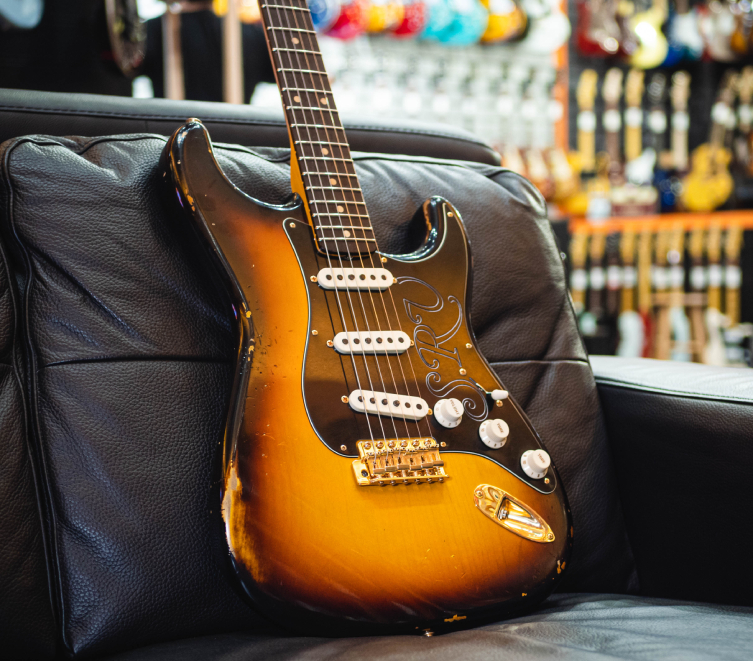
His Strat, ‘Number One’ (or indeed his ‘First Wife’, as he also referred to it) is an amalgamation of different guitars. The body is from a ‘63 Strat, the neck from a ‘62, and the pickups are from 1959. Stevie added the black guard and left-handed tremolo, and the guitar itself was ‘rebuilt more often than a custom Chevy’ according to the man himself.
Pearly Gates - Billy Gibbons
Sticking to the Lonestar State for another classic pairing, let’s tip our cowboy hats to ZZ Top’s inimitable Billy F Gibbons. Purveyor of some of the world’s finest tones (and sunglasses), Gibbons is also the owner of the third of those three most famous Les Pauls ever: Pearly Gates.
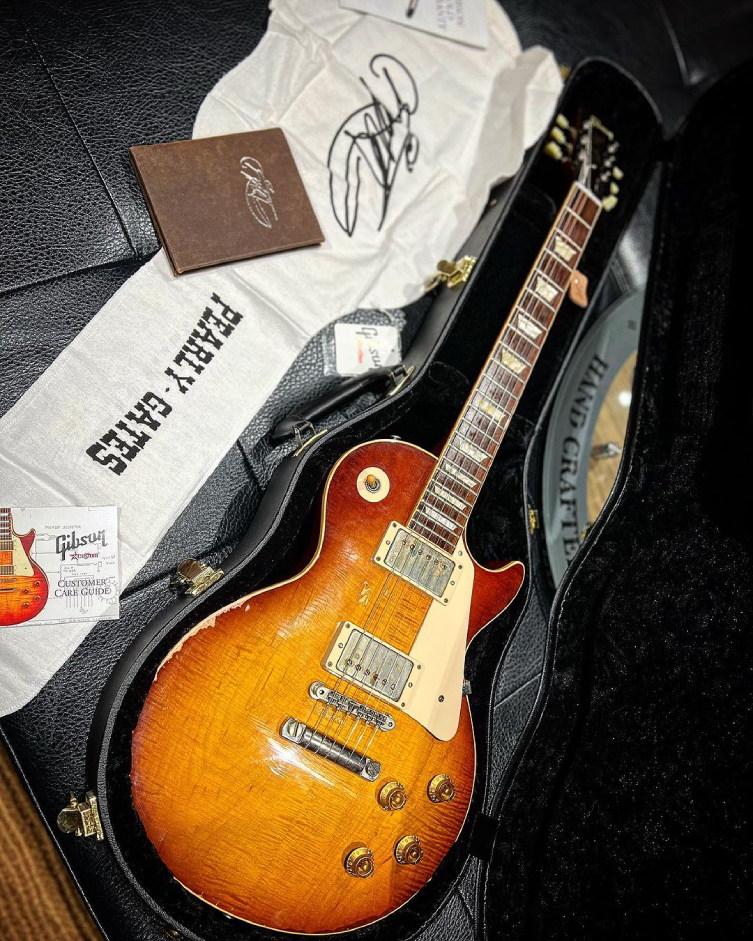
Pearly Gates is, yes, another sunburst 1959 Les Paul Standard, and the story of Gibbons acquiring it is well worth looking up in detail, because it involves a Hollywood starlet, a fancy car, and a farmer with a guitar case under his bed.
Billy famously has more guitars than some countries have populations, but Pearly Gates remains the reference point for all of his greatest tones. Gauge 7 strings, an old peso for a pick, and the correct headgear are the other necessary ingredients for this particular tonal gumbo!
Evo - Steve Vai
Steve Vai is an extraordinary player and so requires a guitar of similar extraordinariness. Luckily, Ibanez met all of Vai’s requirements when he was talking with various companies in the 80s about a signature model. Only Ibanez were able to nail both the mundane (little things like feel and tone) and the unique (monkey grip handle cut into the body, huge routing behind the tremolo, tree-of-life inlays up the entire fingerboard) to deliver a guitar as characteristically eccentric as its owner: the Ibanez JEM.
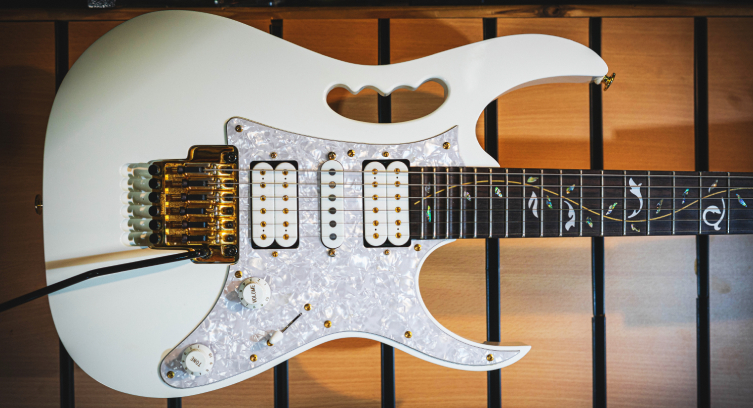
Vai’s personal favourite is one he has named Evo (short for Evolution, the name he also gave to his signature DiMarzio pickups), the most successful from a group of prototypes he received from Ibanez. Evo was the blueprint from which all subsequent JEM models have sprung, and it’s still the guitar Steve plays most often on stage.
Many guitar fans see the JEM as a modified Ibanez RG model, but in fact, the reverse is true: after making the JEM for Vai, Ibanez simplified the design for mass manufacturing (losing the monkey grip, vines etc), so the JEM actually came first!
Arm the Homeless - Tom Morello
Rage Against the Machine have always welded political statements to their bruising brand of rap-tinged rock. We do not expect love songs from this band, but what we do expect is a plethora of crazy, ingenious sonics to come from Tom Morello’s guitar. Ever the sonic wizard, Morello’s vocabulary on the instrument is one of the most unique in guitar history.
His ‘Arm the Homeless’ guitar is one of his main instruments. Kept in E standard tuning due to the locking tremolo, this guitar and a Fender American Standard Telecaster (kept in drop-D tuning) perform the lion’s share of guitar parts throughout Rage’s career.
The guitar itself is another one that’s been broken down and rebuilt numerous times, featuring over a dozen pickup changes, four necks and multiple bridges. Indeed, the only original part remaining from the initial Performance Guitars USA instrument is the Alder body!
Arm the Homeless has a Floyd Rose tremolo, a heavy duty toggle switch (apparently an ‘aircraft switch’!) and a set of EMG pickups. Interestingly, the neck pickup is an EMG H, which is actually a single coil pickup in a humbucker housing. As for the guitar’s name and decorative stickers, let’s let Tom tell you himself:“We were set to play at the Whisky a Go-Go and, just before going over to soundcheck, I scrawled ‘Arm the Homeless’ on the guitar. I liked the juxtaposition of that kind of provocative and militant situationist slogan with those four smiling hippopotamuses all facing in one direction.”
Famous Guitars, Famous Players
How many other famous guitar/artists matchups can you think of? Clapton’s ‘The Fool’ SG? Buddy Guy’s polka dot Strat? Maybe Billy Duffy’s White Falcon? We do tend to associate certain guitars with certain stars, and what’s interesting is how long those associations last.
I have no less than three different ‘59 Les Pauls on here today, and I think you’d agree that they all merit inclusion!
Another interesting thing to note is how many of these world-famous, history-making guitars have been taken apart, rebuilt and had bits replaced: at least four of the ten have been extensively messed around with (one made entirely from scratch), and another five had had alterations made at one point. Only one - Pearly Gates - is, to our best knowledge, largely untampered with.
What this tells me is that these great musicians have all felt the need to bend the instrument somewhat to their will: that ‘stock’ isn’t quite right for them, and that improvements can be made, for their own playing styles anyway! That also tells me that the whole point for each one of these players was to become even more individual. Therefore, if you’ve been inspired to build or mod your own project, take a tip from these great players and change things your own way, to suit your own playing. Don’t copy what they did: be yourself!
If you’re playing a genuine 1959 Les Paul Standard though, maybe leave it alone, ok?


